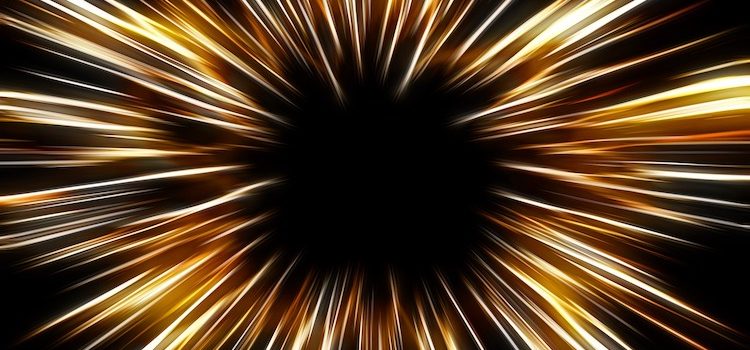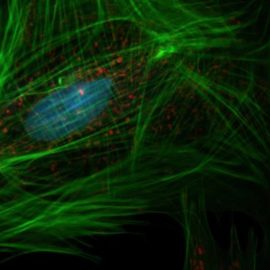

This article is an excerpt from the Shortform book guide to "A Brief History of Time" by Stephen Hawking. Shortform has the world's best summaries and analyses of books you should be reading.
Like this article? Sign up for a free trial here .
What is the singularity theory? Why did Hawking come to question his theory of Big Bang singularity?
Hawking’s mathematical proof that space and time had a beginning, according to general relativity, was what first propelled him to fame within the physics community. Later, reflecting on his own theoretical proof about the big bang singularity, Hawking came to believe that they imply the theory of general relativity is incomplete, not that the universe actually did begin at a singularity.
Read more to learn about the singularity theory and why Hawking came to believe that it indicates a problem.
A Quantum Theory of Gravity
Although the inflationary big bang theory explained why some of the initial conditions of the universe were just right, Hawking felt that further theoretical development was needed to scientifically (that is, without invoking a divine creator who could arbitrarily fine-tune the universe for the benefit of humankind) explain how the universe came to be the way it is.
This led Hawking to suggest that a quantum theory of gravity might provide a better solution, for two reasons: First, it would eliminate the “singularity” (which we’ll discuss in a moment). Second, it would address the fine-tuning problem more comprehensively. However, before we discuss these two benefits, let’s take a step back and discuss what the “singularity” is.
The Big-Bang Singularity
By the time Hawking was in graduate school, the expansion of the universe was widely accepted, and much of Hawking’s early work in physics focused on using general relativity to model the early universe.
So, what is the singularity theory? Hawking (along with George Ellis and Roger Penrose) was able to show that, based on general relativity, the universe began at a “singularity,” that is, a point where the entire universe was compressed into an infinitely small point, with infinite density and infinite curvature of space-time. Hawking points out that, at a singularity, all the laws of physics break down, because space-time itself ceases to exist. After all, if you confine space into an infinitely small space, then you don’t have any space left.
Since time is relative to the curvature of space (or, equivalently, to gravity), this means that time also ceases to exist at a singularity. Thus, Hawking’s work showed that according to general relativity, time itself began at a finite point in the past.
Hawking’s mathematical proof that space and time had a beginning, according to general relativity, was what first propelled Hawking to fame within the physics community.
| Did Hawking Prove the Existence of God? Some Christians have used Hawking’s proof that time had a beginning as an argument for the existence of God and the divine creation of the universe. Specifically, physicists sometimes define time as the dimension in which cause and effect take place, such that causes always come before the effects that they produce. If time itself came into being at some point (an effect), then there must be a cause that exists independent of the space-time of our universe to bring it into existence (cause the effect), because there is no time prior to that for a cause within our universe to trigger the big bang. The Bible portrays God as the creator of the universe and also as being independent of the space and time that humans are confined to. Thus, the beginning of time at a singularity implies the existence of some causal agent that resembles the God of the Bible. As we’ll see later in this Question, Hawking counters this argument by suggesting that a quantum theory of gravity will eliminate the singularity. |
Eliminating the Singularity
Later, reflecting on his own theoretical proofs about the big bang singularity, Hawking came to believe that they imply the theory of general relativity is incomplete, not that the universe actually did begin at a singularity.
Hawking points out that the infinite density and temperature of the universe at the singularity are red flags, indicating a problem with the theory, because quantities are never infinite in real life. Just as quantum mechanics was developed to solve the problem that classical theories predicted infinite radiation from a hot body, a quantum theory of gravity would eliminate the singularities (and infinite quantities) that general relativity predicts.
Furthermore, according to Hawking, in quantum gravity, spacetime could take the shape of a closed four-dimensional surface (like a sphere, except that the surface of a sphere is just two-dimensional instead of four-dimensional) with no beginning or ending point. Thus, he refers to this concept as the “no-boundary model.”
Hawking explains that the “no-boundary model” makes sense because, to model gravity in quantum mechanics, you have to use “imaginary numbers” for the time variable. (In mathematics, an “imaginary number” is the square root of a negative number.) According to Hawking, if you allow the time variable in a quantum model to have an “imaginary” value, then there is no longer any difference between the time dimension and the spatial dimensions of the model. This means that …
| Alternative Methods of Eliminating the Singularity Hawking is not the only physicist who thinks the big-bang singularity indicates a problem. In addition to Hawking’s “no-boundary” idea, other physicists have proposed a variety of hypothetical models that eliminate the singularity one way or another. For example, Christoff Wetterich suggested that perhaps, instead of starting with a “big bang” in the finite past, the universe might have existed forever as a small, cold system that eventually began expanding at an accelerating rate, up until the end of the inflationary period. This has been termed the “slow thaw model”, and would be possible if the mass of all subatomic particles is gradually increasing over time. As evidence for this possibility, Wetterich cites research on the “Higgs Boson,” a subatomic particle that should theoretically have no mass, but is observed to have mass because of its interaction with a quantum energy field called the “Higgs field.’ He claims that the mass of all particles might be determined by a uniform quantum field that permeates all of spacetime, whose strength is steadily increasing over time. Similarly, Ethan Seigel argues that the inflationary phase erased so much information that there’s no reason to assume the big bang started from a singularity. He points out that the cosmic microwave background gives us a picture of the universe right at the end of inflation, but we don’t have any data on what the universe was like before that. So, to get to the big-bang singularity, we have to extrapolate beyond our data, making arbitrary assumptions about how matter behaves under conditions we can’t observe. Thus, he doesn’t propose a single alternative model for the pre-inflation history of the universe. Instead, he points out that it could have been anything: Maybe the universe started from a singularity. Maybe it existed forever in a small volume before the period of inflation. Maybe it had a different and complex history before that. But we have no way of knowing or finding out through observation. Finally, the “bouncing universe model” is regaining traction with some people. The bouncing universe model postulates that the universe goes through an endless cycle of expansion and contraction. Right now, it’s expanding, but it will eventually reach some maximum size and start contracting. When it gets down to a very small volume, something will cause it to rebound and the cycle of expansion and contraction will repeat itself. The bouncing universe model was discarded by most scientists because it is hard to reconcile with the observation that the universe appears to be expanding too fast to recollapse. Although it is regaining some popularity, it is not clear how new proponents propose to address this problem. |
Eliminating the Fine-Tuning Problem
Recall from the previous Question that quantum mechanics doesn’t give you an exact path for a particle that you’re modeling—rather, it gives you a probability map showing where the particle is most likely to be. You find this probability map by adding up all the possible paths that the particle could take.
Hawking conjectures that if you could model the big bang with a quantum theory of gravity, this would completely eliminate the need to fine-tune the initial conditions of the universe, because the universe wouldn’t have just one set of initial conditions, but every possible set of initial conditions. Therefore, the conditions we observe will have to show up somewhere on the probability map.
This has a similar effect to postulating an infinite number of universes, as the strong anthropic principle does, but without contradicting the scientific method as the SAP does.
| Testing Hawking’s No-Boundary Theory As we’ve discussed, Hawking says a good theory must make testable predictions. So what predictions does his no-boundary model of the universe make? One piece of evidence that Hawking presents is that quantum effects in the early universe would have caused slight nonuniformities in the cosmic background radiation. These slight variations were observed and mapped using the cosmic background explorer (COBE) satellite in 1989. However, Hawking does not discuss whether these quantum fluctuations are unique to his no-boundary model. Hawking concedes that, as yet, there is no complete quantum theory of gravity. Thus, his no-boundary model is really a conjecture about how future theories may allow us to resolve the issues with general-relativity-based models of the big bang, not a complete theory in itself. This limits his ability to make testable predictions based on it. However, if space-time forms a closed surface as Hawking proposes, then one prediction it does make is that the universe will eventually stop expanding and begin contracting, since it would ultimately have to get back to where it started (just like if you travel east around the equator far enough, you’ll eventually get back to where you started). Since the book’s publication, astronomers have determined that the expansion of the universe is actually accelerating, implying that it will probably continue to expand indefinitely and never collapse back in on itself. This doesn’t bode well for Hawking’s no-boundary model. |
Recap
According to the theory of general relativity, the universe began at a “singularity” where all matter, energy, space, and time came into existence at an infinitely small point and expanded outward from there.

———End of Preview———
Like what you just read? Read the rest of the world's best book summary and analysis of Stephen Hawking's "A Brief History of Time" at Shortform .
Here's what you'll find in our full A Brief History of Time summary :
- The search for a theory that explains the history and evolution of our universe
- Stephen Hawking's discussions about time, space, dimensions, and quantum theory
- How time travel would theoretically work






